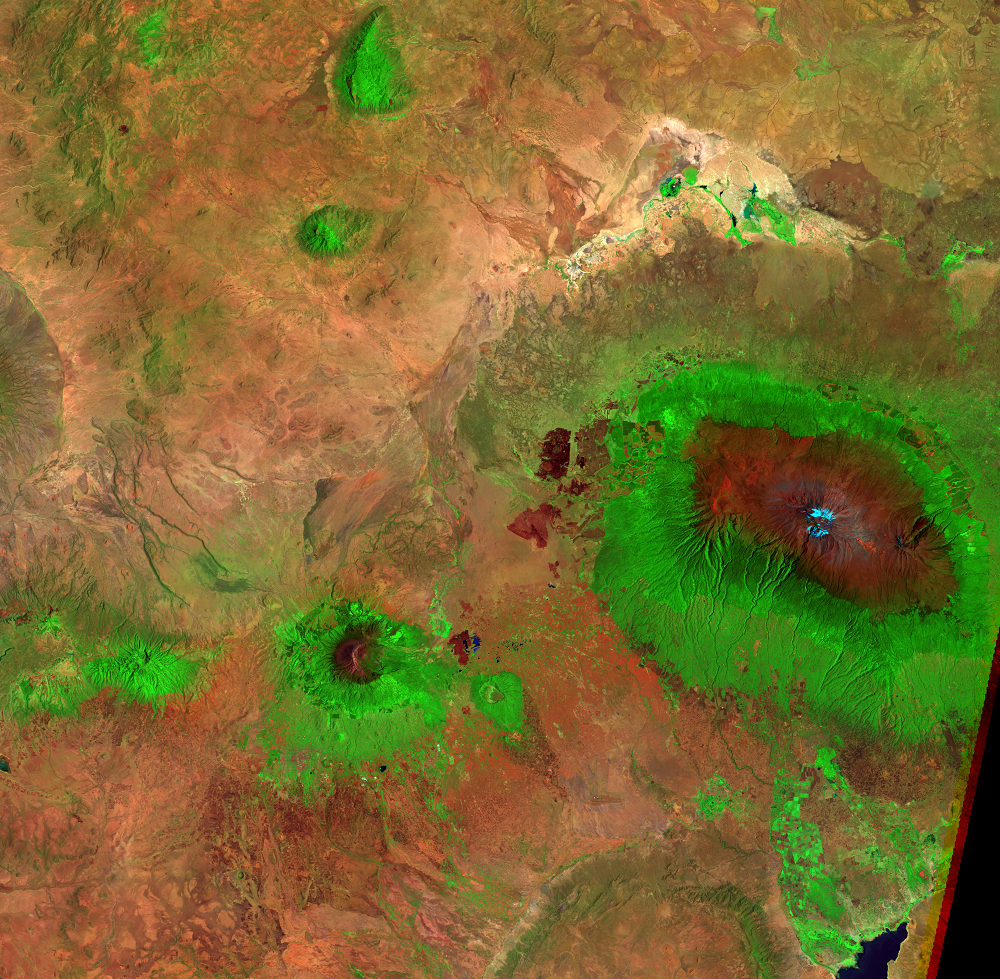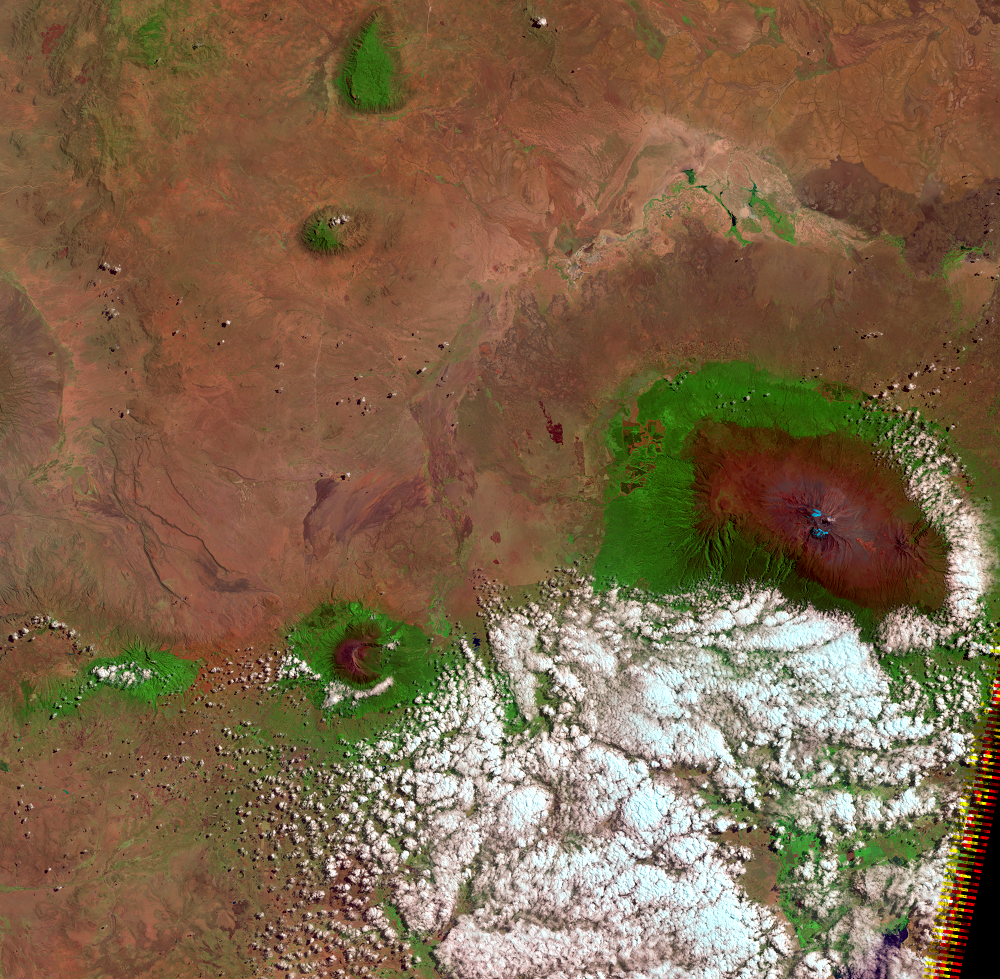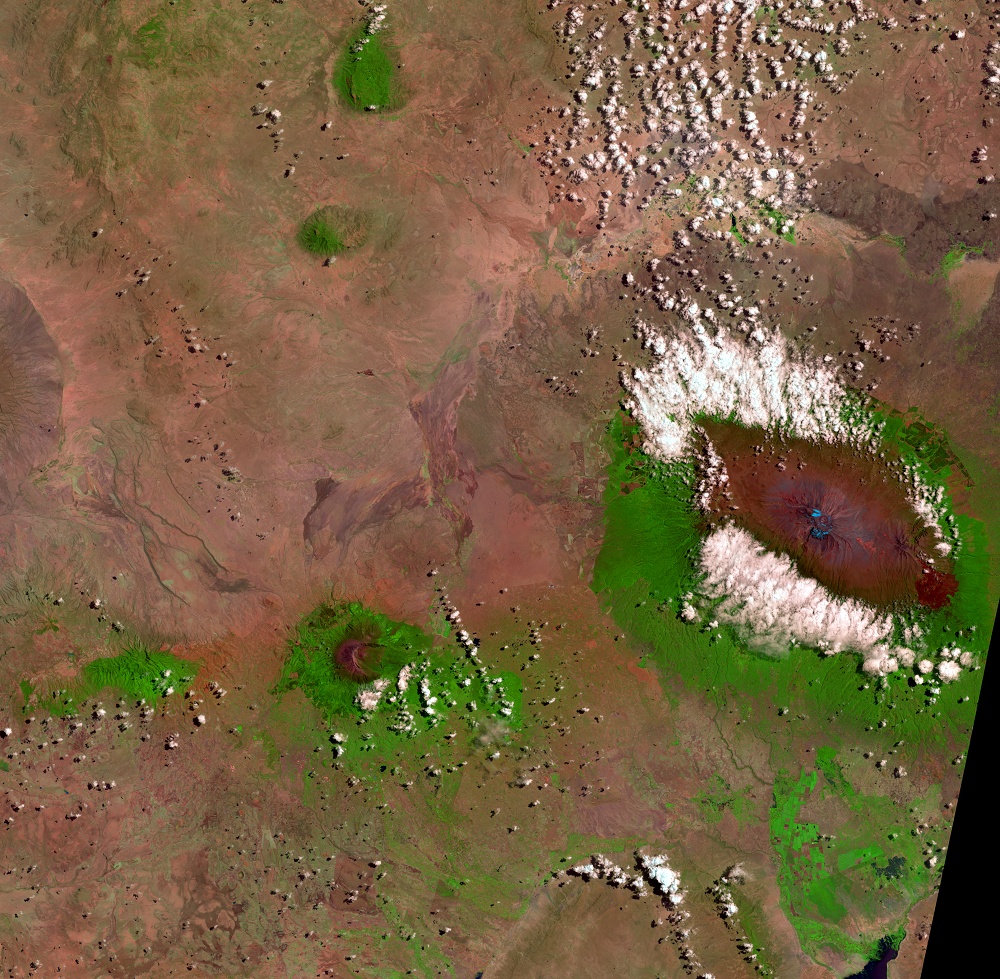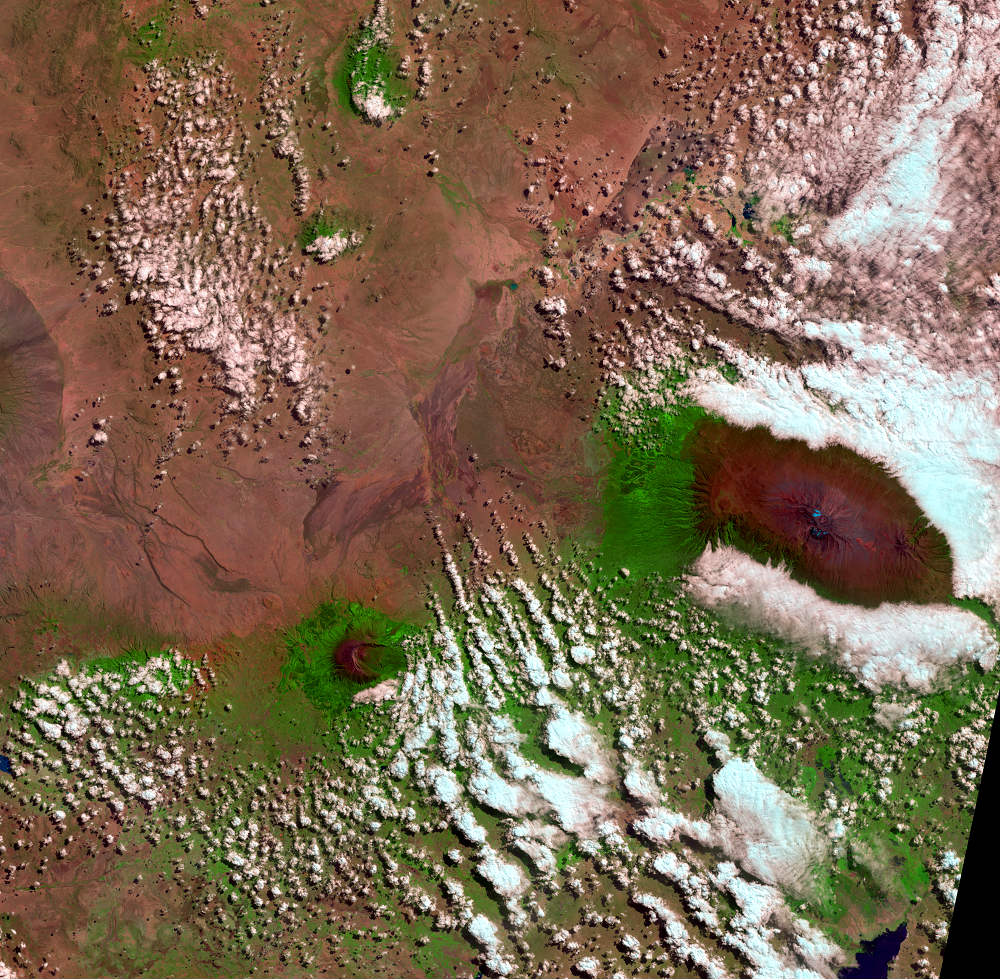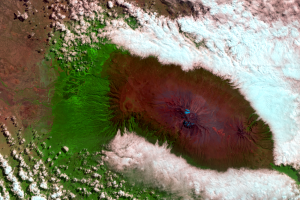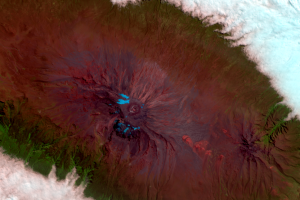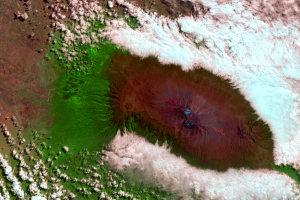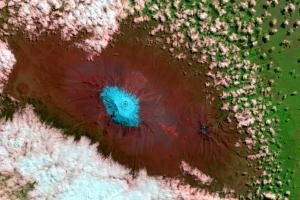
Mount Kilimanjaro, Tanzania
Earth Resources Observation and Science (EROS) Center - Earthshots
These images show the famous “snows of Kilimanjaro” in 1976, 2000, 2010, 2013, and 2019. Mount Kilimanjaro, almost 20,000 feet above sea level, is the highest peak in Africa. Though only about 200 miles from the equator, it has been capped by glaciers and snow for 11,000 years. This white cap shrinks and grows almost daily, but over the last century or more, its overall trend has been a steady decline. These images show durable, hard-ice glaciers, as well as the ephemeral snow on and around them. Scientists have focused on the glaciers, trying to understand why they are shrinking, how long they may last, and what they can teach us about the atmosphere today and the Earth long ago.
In these false-color images, vegetation appears green, drylands a brownish tan, and glaciers and snow cyan.
Imagery
Downloads
Bowen, Mark, 2005, Thin ice—unlocking the secrets of climate in the world’s highest mountains: New York, Henry Holt, 463 p.
Cullen, N.J., Mölg, T., Kaser, G., Hussein, K., Steffen, K., Hardy, D.R., 2006, Kilimanjaro glaciers—recent areal extent from satellite data and new interpretation of observed 20th century retreat rates: Geophysical Research Letters, v. 33, L16502.
Cullen, N.J., Sirguey, P., Mölg, T., Kaser, G., Winkler, M., and Fitzsimons, S.J., 2013, A century of ice retreat on Kilimanjaro: the mapping reloaded: The Cryosphere, v. 7, p. 419–431, https://doi.org/10.5194/tc-7-419-2013.
Hastenrath, Stefan, and Greischar, Lawrence, 1997, Glacier recession on Kilimanjaro, East Africa, 1912–89: Journal of Glaciology, v. 43, no. 145, p. 455–459.
Hastenrath, Stefan, 2001, Variations of East African climate during the past two centuries: Climate Change, v. 50, p. 209–217.
Hastenrath, Stefan, 2006, Diagnosing the decaying glaciers of equatorial East Africa: Meteorologische Zeitschrift, v. 15, no. 3, p. 265–271.
Hay, S.I., Cox, J., Rogers, D.J., Randolph, S.E., Stern, D.I., Shanks, G.D., Myers, M.F., and Snow, R.W., 2002, Climate change and the resurgence of malaria in the East African highlands: Nature, v. 415, p. 905–909.
Hemp, Andreas, 2005, Climate change-driven forest fires marginalize the impact of ice cap wasting on Kilimanjaro: Global Change Biology, v. 11, p. 1013–1023.
Hemp, Andreas, 2006, Vegetation of Kilimanjaro—hidden endemics and missing bamboo: African Journal of Ecology, v. 44, p. 305–328.
Kaser, Georg, 2004, Modern glacier retreat on Kilimanjaro as evidence of climate change—observations and facts: International Journal of Climatology, v. 24, p. 329–339.
Kruss, Phillip, 1983, Climate change in East Africa: A numerical simulation from the 100 years of terminus record at Lewis Glacier, Mount Kenya: Zeitschrift fur Gletscherkunde und Glazialgeologie, v. 19, p. 43–60.
Maro, Paul S., 1988, Agricultural land management under population pressure—the Kilimanjaro experience, Tanzania: Mountain Research and Development, v. 8, no. 4, p. 273–282.
Mölg, T., Hardy, D.R., and Kaser, G., 2003, Solar-radiation-maintained glacier recession on Kilimanjaro drawn from combined ice-radiation geometry modeling: Journal of Geophysical Research, v. 108, no. D23, 4731.
Mölg, Thomas, and Hardy, Douglas R., 2004, Ablation and associated energy balance of a horizontal glacier surface on Kilimanjaro: Journal of Geophysical Research, v. 109, p. D16104.
Mölg, T., Cullen, N.J., Hardy, D.R., Kaser, G., and Klok, L., 2007, Mass balance of a slope glacier on Kilimanjaro and its sensitivity to climate: International Journal of Climatology, v. 28, p. 881–892.
Mölg, T., Hardy, D.R., Cullen, N.J., and Kaser, G., 2008, Tropical glaciers, climate change, and society—focus on Kilimanjaro (East Africa), in Orlove, B., Wiegandt, E., and Luckman, B.H., eds., Darkening peaks—glacier retreat, science, and society: Berkeley, CA, University of California Press, p. 168–182.
Mote, Philip W., and Kaser, Georg, 2007, The shrinking glaciers of Kilimanjaro: can global warming be blamed? American Scientist, v. 95, no. 4, p. 318.
Revkin, Andrew C., 2004, Climate debate gets its icon—Mt. Kilimanjaro: New York Times, March 23, 2004.
Scoon R.N., 2018, Kilimanjaro National Park, in Geology of National Parks of Central/Southern Kenya and Northern Tanzania: Cham, Switzerland, Springer, p. 129–140, https://doi.org/10.1007/978-3-319-73785-0_12.
Thompson, L.G., Mosley-Thompson, E., Davis, M.E., Henderson, K.A., Brecher, HG.H., Zagorodnov, V.S., Mashiotta, T.A., Lin, P.N., Mikhalenko, V.N., Hardy, D.R., and Beer, J., 2002, Kilimanjaro ice core records—evidence of Holocene climate change in tropical Africa: Science, v. 298, no. 5593, p. 589–593.
Thompson, L.G., Brecher, H.H., Mosley-Thompson, E., Hardy, D.R., and Mark, B.G., 2009, Glacier Loss on Kilimanjaro continues unabated: Proceedings of the National Academy of Sciences, v. 106, no. 47, 19770–19775.
Veettil, B.K., and Kamp, U., 2019, Global Disappearance of Tropical Mountain Glaciers: Observations, Causes, and Challenges: Geosciences, v. 9, no. 5, p. 196, https://www.mdpi.com/2076-3263/9/5/196.


